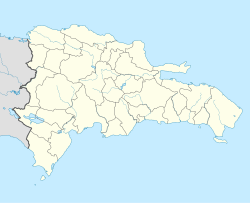Juan Dolio | |
|---|---|
| Coordinates: 18°25′30″N69°25′27″W / 18.42500°N 69.42417°W | |
| Country | |
| Province | San Pedro de Macoris |
| Population (2010) [1] | 2,488 |
Juan Dolio is a seaside community in the province of San Pedro de Macoris on the southern coast of the Dominican Republic on the island of Hispaniola. As of 2010, it had 2,488 inhabitants [1] and belongs to the district municipality Guayacanes.
